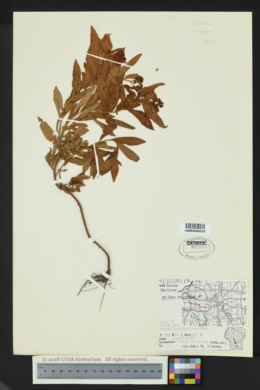Riparian Vegetation of the Southern Appalachians
Authors:
Brown, Rebecca Louise
Citation: Brown, Rebecca Louise. 2002. Biodiversity and exotic species invasion in southern Appalachian riparian plant communities. Ph.D. thesis, University of North Carolina at Chapel Hill.
Abstract: Although traditional ecological theory suggests that species-rich communities should be difficult to invade because resource use complementarity among the numerous species leaves fewer resources for the potential invader, the opposite has been found in many natural communities. I propose that the relationship between diversity and community invasibility depends on the degree to which community composition is driven by immigration versus extinction processes. Such processes include moderate disturbance and propagule pressure, which increase immigration, whereas competition and environmental stress limit community composition by creating local extinctions or inhibiting new species colonization. I expect that high rates of propagule pressure combined with disturbance due to flooding cause riparian plant communities to be disproportionately driven by immigration processes. I tested relationships between native and exotic species diversity of vascular plant species and assessed patterns in riparian vegetation composition using multi-scale vegetation plots stratified by geomorphic position in riparian areas and adjacent forested uplands of the Little Tennessee, Upper New, and Nolichucky Rivers in Western North Carolina. I used geomorphic position as a surrogate for flood intensity, with the more frequently flooded geomorphic positions hypothesized to be more strongly immigration-driven. Native and exotic species richness were positively correlated with flooding in riparian zones. At the 100-m2 scale, the relationship between native and exotic species richness in riparian areas was positive, whereas there was no relationship in uplands. However, at the 0.01-m2 scale, there was a negative relationship between native and exotic diversity in riparian areas, likely because of community saturation at small spatial scales. Species composition varied among the three rivers, likely due to the relative ease of dispersal within a single drainage compared to between watersheds, but was consistently correlated with geomorphic position and soil fertility. To further substantiate the role of immigration processes in riparian plant communities, I assessed levels of propagule pressure using seed deposition traps stratified across geomorphic positions in riparian zones and found higher abundance and species richness of propagules, and a larger percentage propagules of exotic species with increased flooding. In an independent field experiment I demonstrated that propagule diversity has a positive effect on community diversity.
Families: 1.
Genera: 1.
Species: 1.
Total Taxa: 1.

